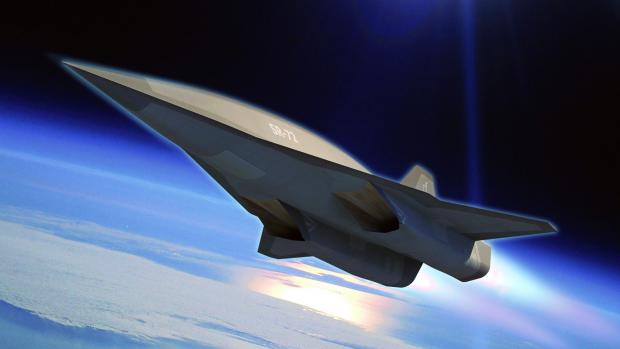
Breaking News
 BREAKING EXCLUSIVE: Trump Admin. Preparing To Sack Kash Patel...
BREAKING EXCLUSIVE: Trump Admin. Preparing To Sack Kash Patel...
 78 Percent Of HR Leaders In The U.S. Say That Their Companies Are Conducting "Serial Layoffs&qu
78 Percent Of HR Leaders In The U.S. Say That Their Companies Are Conducting "Serial Layoffs&qu
 Reflecting on the (R) Value of Foil Insulation for Preparedness
Reflecting on the (R) Value of Foil Insulation for Preparedness
 Dave Collum: Financial Crisis, Diddy, Energy Weapons, QAnon, and the Deep State's Digital Evolut
Dave Collum: Financial Crisis, Diddy, Energy Weapons, QAnon, and the Deep State's Digital Evolut
Top Tech News
 Chinese Scientists Produce 'Impossible' Steel to Line Nuclear Fusion Reactors in Major Break
Chinese Scientists Produce 'Impossible' Steel to Line Nuclear Fusion Reactors in Major Break
 1,000 miles: EV range world record demolished ... by a pickup truck
1,000 miles: EV range world record demolished ... by a pickup truck
 Fermented Stevia Extract Kills Pancreatic Cancer Cells In Lab Tests
Fermented Stevia Extract Kills Pancreatic Cancer Cells In Lab Tests
 3D printing set to slash nuclear plant build times & costs
3D printing set to slash nuclear plant build times & costs
 You can design the wheels for NASA's next moon vehicle with the 'Rock and Roll Challenge
You can design the wheels for NASA's next moon vehicle with the 'Rock and Roll Challenge
 'Robot skin' beats human reflexes, transforms grip with fabric-powered touch
'Robot skin' beats human reflexes, transforms grip with fabric-powered touch
 World's first nuclear fusion plant being built in US to power Microsoft data centers
World's first nuclear fusion plant being built in US to power Microsoft data centers
 The mitochondria are more than just the "powerhouse of the cell" – they initiate immune...
The mitochondria are more than just the "powerhouse of the cell" – they initiate immune...
 Historic Aviation Engine Advance to Unlock Hypersonic Mach 10 Planes
Historic Aviation Engine Advance to Unlock Hypersonic Mach 10 Planes
 OpenAI CEO Sam Altman Pitches Eyeball-Scanning World ID to Bankers
OpenAI CEO Sam Altman Pitches Eyeball-Scanning World ID to Bankers
Historic Aviation Engine Advance to Unlock Hypersonic Mach 10 Planes

They could potential provide for 25-30% or more efficiency when hybridized with air-breathing systems for hypersonic applications. A past gain of 15-30% gain in efficiency was early turbofans that unlocked long range global air travel. This new efficiency, simpler components and reduced weight can unlock practical hypersonic planes and even future passenger planes at mach 10+.
Rotating Detonation Engines could unlock hypersonic planes because they could bridge the gap between mach 3 and mach 5 which was forcing three different engines. The old approaches have been the three-engine approach (turbine + ramjet + scramjet) like NASA's TBCC (Turbine-Based Combined Cycle) or RBCC (Rocket-Based Combined Cycle) systems. Those add a lot of weight and complexity.
Venus Aerospace is developing the Rotating Detonation Rocket Engine (RDRE) and the Variable Detonation Ramjet (VDR2), which integrate detonation-based propulsion to create a hybrid system. Detonation involves continuous supersonic shockwaves that combust fuel more efficiently (15-25% better specific impulse than traditional engines), producing more thrust with less fuel and fewer parts. This simplifies hypersonic propulsion by reducing the number of engines to essentially one hybrid unit (RDRE + VDR2), covering takeoff to Mach 6+ with rocket-like power for low speeds and ramjet efficiency for high speeds.
By removing heavy turbines and multiple engine bays, the RDRE/VDR2 system is lighter and more compact. Detonation's higher efficiency (15%+ thrust per fuel unit) allows smaller fuel tanks, reducing overall vehicle mass by 10-20% and enabling runway operations without massive boosters.
RDRE has no moving parts beyond basic valves, simplifying manufacturing (3D-printed designs) and maintenance compared to turbines with thousands of blades. The detonation wave provides inherent compression, bypassing ramjet/scramjet airflow management issues. Venus's May 2025 flight test validated this in real conditions, paving the way for reusable hypersonic drones and the Stargazer aircraft by 2028+.
Venus's VDR2 hybrid uses RDRE for takeoff thrust (rocket mode) and seamlessly transitions to detonation-enhanced ramjet mode for cruise, eliminating the need for a turbine or dedicated scramjet. This single-engine design (or dual-mode in one unit) covers 0 to Mach 6+, similar to how Hermeus (a strong competitor) reduces to two engines but with even fewer components.
This is comparable to many post-WWII incremental improvements in jet engines, where gains of 15-30%+ enabled new capabilities (e.g., longer ranges, higher speeds). However, early shifts like high-octane fuel or turbojet-to-turbofan transitions often delivered larger leaps (30-50%+), transforming aviation from piston-prop to global jet travel.



